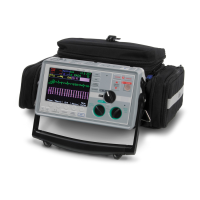E Series Service Manual
9650-1450-01 Rev. D 1-39
23.0NIBP Monitor Test
The NIBP monitor test verifies the repeatability of the systolic, diastolic, and mean blood pressure measurements, as well as the patient pulse rate
calculation.
Tools Needed: Fl
uke NIBP simulator (the values and procedure that we provide are specific to the BP Pump 2).
Note: The primary propose of an NIBP simulator is to reproduce a pressure profile similar to a live patient to be used for testing the repeatability
and
functionality of the system. There are many different NIBP simulators on the market, each manufacturer uses a different method to
develop
their
algorithm. Consequently, readings from different simulators may
vary.
To test for repeatability, you should first establish
the
offset
1
of your simulator. The offset value should then be used to determine the expected values. NIBP simulators cannot be used as a source
for
testing the accuracy of the non-invasive blood pressure measurements of devices such as the ZOLL E
Series monitor/defibrillator.
Test Setup:
1. Connect the Analyzer’s simulator hose to the NIBP connector on the E Series unit.
2. Set the following parameters on the NIBP Analyzer:
2
Parameter Value
3. Make sure the ECG cable is not connected to the E Series unit.
4. If the SpO2 option is installed, make sure that the Masimo cable is NOT connected to the E Series unit.
1
NIBP
Simulators may produce a reading on the
NIBP
monitor that is shifted from the simulator's setting. The offset value must be established based on
a
statis-
tical sample of monitors and readings. Please contact ZOLL Technical Support
if
you require assistance establishing the offset of the simulator and
test
set-up
that you are
utilizing.
2
If
you are using the
Fluke®
Biomedica
l
Cuftlink,
you must change the shift value of the Blood Pressure Envelope to +3 on the Pressure Curve Adjust
Menu.
3
Not all simulators have a setting of 93mmHg. Check the simulators user's manual for
recommendations.
Systolic pressure 120 mmHg
Diastolic pressure 80 mmHg
Mean pressure
93 mmHg
3
Heart pressure 80 bpm

